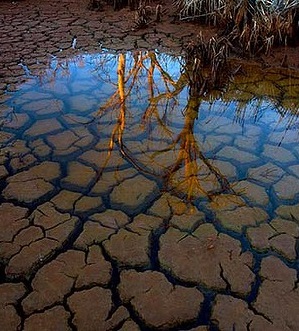Groundwater search improved
 Australian experts have come up with a cost effective and quick way to find groundwater.
Australian experts have come up with a cost effective and quick way to find groundwater.
UniSA researcher Dr Alaa Ahmed has come up with new technology that can pinpoint sites where precious groundwater is likely to be found.
Using satellite imagery, geospatial techniques and adding information on drainage, rock types, fractures, topography and rainfall, Dr Ahmed has mapped the central Flinders Ranges region into three distinct classifications for groundwater stored in fractured rock aquifers: good, moderate and low.
He has shown that the most effective groundwater recharge zones (where surface water collects as it moves downwards) are located where there are numerous rock fractures, low drainage and a gentle slope.
Conversely, the least effective areas to find groundwater are underlain by shale and siltstone.
“The remote sensing doesn’t cost us anything because existing satellites located above Australia are already taking photos of the topography. We also have the software – GIS – to analyse and map all the data,” Dr Ahmed says.
Existing methods to assess groundwater sources involve extensive drilling, which is expensive, time consuming and often inaccurate.
Using a combination of remote sensing, GIS and information and other geological factors, hydrologists should be able to find precise groundwater locations at a fraction of the cost.
“Groundwater makes up approximately 17 per cent of Australia’s available water resources, 30 per cent of its consumption and is found across 60 per cent of the continent,” Dr Ahmed says.
“But prolonged droughts have led to higher salinity and pumping costs and fewer groundwater sites.
“We urgently need to find faster and cheaper ways to locate groundwater because water supplies are limited in so many parts of the country. By creating satellite maps showing where groundwater is more likely to be found, we can go a long way towards improving our water resources.”
While this study was undertaken in South Australia, the same technique could be used to detect groundwater in any arid region across the world, including Egypt, where Dr Ahmed has carried out similar research.
“Water shortages and high salinity affect many countries. With global warming, we can expect to see more droughts and so water will become an even scarcer resource. Hopefully this technology will help ensure we have sustainable water supplies for decades to come,” he says.
“It will enable policymakers to decide potential sites for recharging the groundwater aquifers without depleting or harming the environment.”
More details are accessible here.








 Print
Print